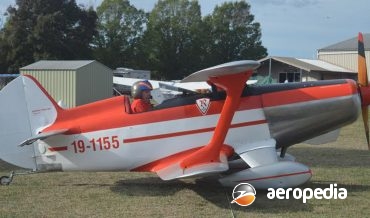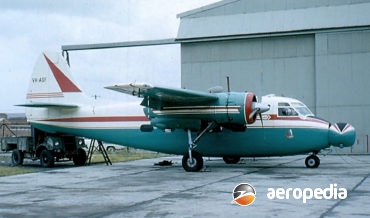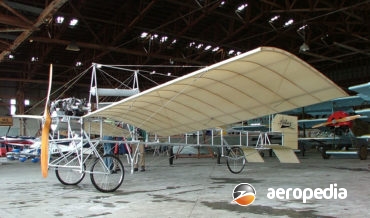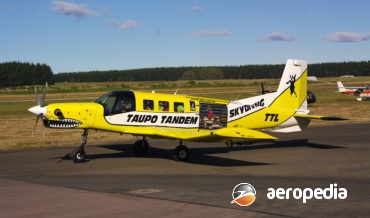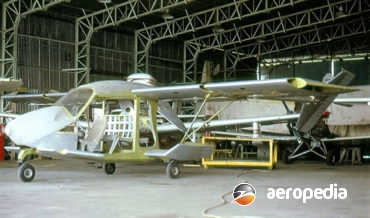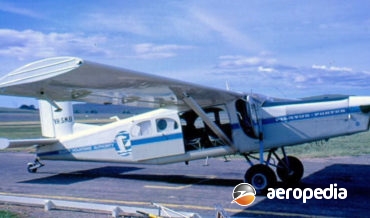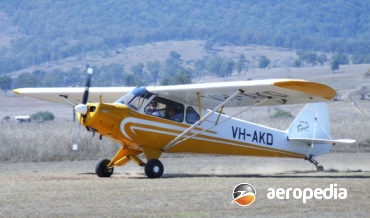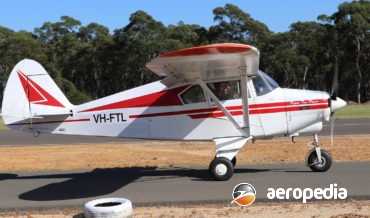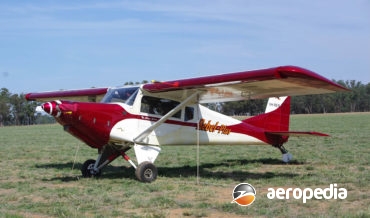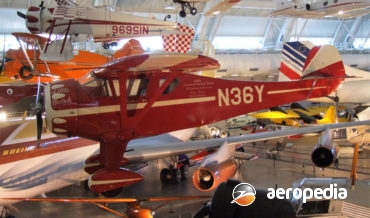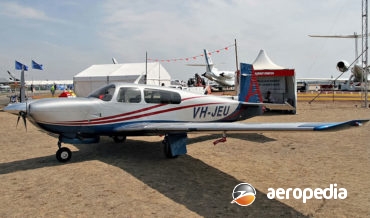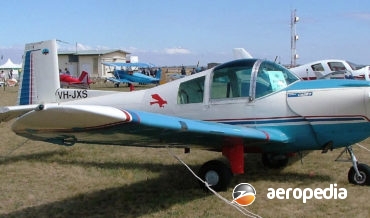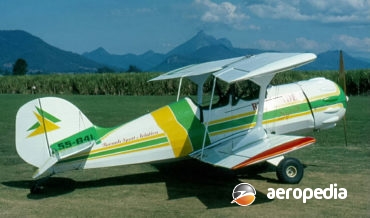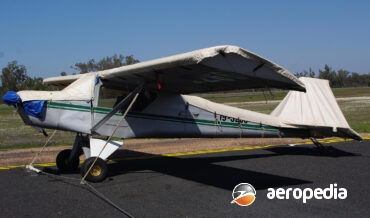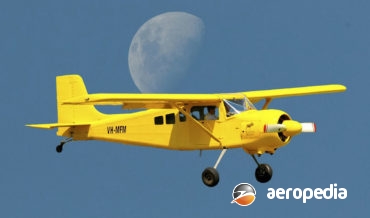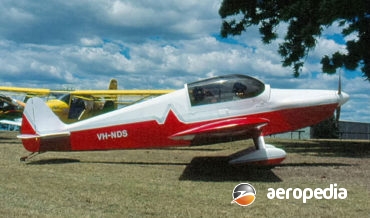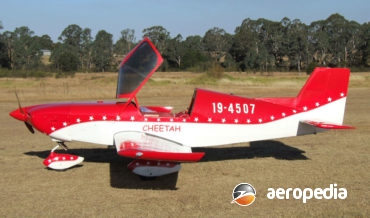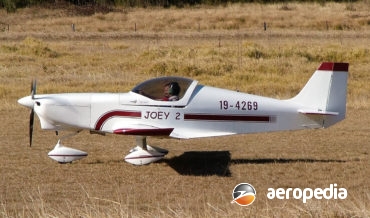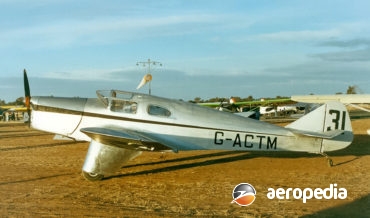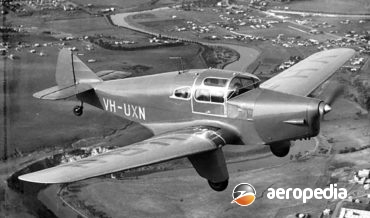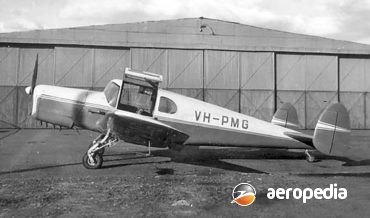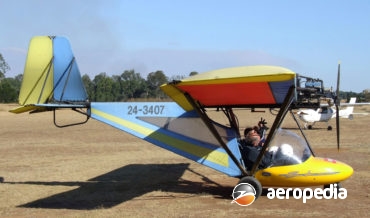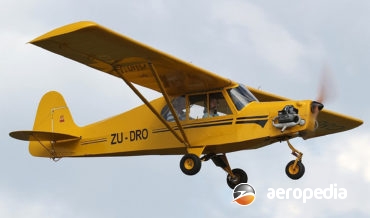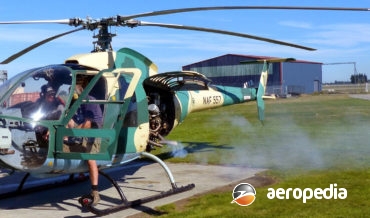All Contents
Contents
The TWA-4 was a three-seat light cabin monoplane which in general appearance looked much like the Percival Gull series designed by Edgar Percival in the United Kingdom.
David C. Eyre
- May 8, 2019
The Knight Twister is a single-seat, single-engine, aerobatic sport biplane designed in 1928, built and first flown in 1932 by Vernon W Payne, and since then it has been marketed in plan form for home constructors.
David C. Eyre
- May 8, 2019
The PL-9 was designed by Ladislao Pazmany and is one of a number of designs produced by him over the years to meet the requirements of the light sport aircraft market.
David C. Eyre
- May 8, 2019
At the end of World War II Percival Aircraft Ltd produced a five-seat commercial aircraft known as the P.48 Merganser, which was of all-metal, stressed skin construction with fabric covered control surfaces.
David C. Eyre
- May 8, 2019
Herbert John Pither [1871 to 1934] was born in Reigate, Surrey, in the United Kingdom and was the second eldest of 12 children of John and Lydia Pither, who emigrated to Canterbury on the south island of New Zealand on board the vessel Crusader in 1875
David C. Eyre
- May 8, 2019
The PAC 750XL was designed and produced by Pacific Aerospace Corp at Hamilton, New Zealand, the company having since 1966 produced over 600 aircraft. The 750XL was designed to meet the utility market where the parachuting industry, and other operators, would benefit from the aircrafts performance and low operating costs
David C. Eyre
- May 8, 2019
The Jeanie Teenie was designed by Calvin Parker of Coolidge, Arizona and was his first design and was known as the JT-1 and was first shown to the public in 1967, its initial development taking place in Alabama.
David C. Eyre
- May 8, 2019
The Bush Boar STOL 19-8472 was a one-off two-seat light sport aircraft designed and built by Robert Pavan. It commenced life as a Calair CA-21 Skyfox and was registered 55-0608 on 5 November 1990.
David C. Eyre
- May 8, 2019
The PL-4A was designed by Ladislao Pazmany as an easy-to-build, low-cost, aircraft for amateur builders, and the prototype was flown for the first time on 12 July 1972.
David C. Eyre
- May 8, 2019
The Airjeep (in some references referred to as the Air Sedan and PL-13) was designed by well known Australian aircraft designer, Luigi Pellarini, designer of the Fawcett 120, Transavia PL-12, Victa R-2, Kingsford Smith PL-7 Tanker and a number of other projects, including what was to be the PL-9, a
David C. Eyre
- May 8, 2019
Designed by the Pilatus Aircraft Works Ltd of Stans, Switzerland, the Turbo Porter was the culmination of a series of aircraft developed for utility use.
David C. Eyre
- May 8, 2019
The first Cub was the E-2, designed by the brothers C G and Gordon Taylor, and it was powered by the Brownbach Kitten engine, eventually replaced by the Continental Motors A-40 of 28-kw (37-hp).
David C. Eyre
- May 8, 2019
The PA-16 was a development of the PA-15 Vagabond, being a stretched and refined variant to seat four, having an extra fuel tank, and other refinements. Production only proceeded for one year and some 736 were completed.
David C. Eyre
- May 8, 2019
The Piper PA-22 Tri-Pacer appeared on the market in 1951.
David C. Eyre
- May 8, 2019
Designed as a single-engine, high-performance executive aircraft, the Comanche was developed and sold in large numbers throughout the world and, when production concluded in the 1980s when floods destroyed the production line at Lock Haven, some 4,856 examples had been completed, comprising 1,143 Model 180, 2,537 Model 250, 1,028 Model
David C. Eyre
- May 8, 2019
The Rebel is one of a series of kit aircraft produced by Murphy Aviation Ltd in British Colombia.
David C. Eyre
- May 8, 2019
The Monocoupe was originally designed by Don Luscombe but evolved through a number of models by the efforts of Luscombe and Clayton Folkerts and was built in large numbers from 1928 to the later 1950s with a variety of engines.
David C. Eyre
- May 8, 2019
When first released to the market the Acclaim was described as the fastest, most powerful Mooney ever produced and as the flagship of the Mooney fleet, being able to “climb quicker and provide more pulse-sounding performance” than any other aircraft in its class
David C. Eyre
- May 8, 2019
After World War II Mooney Aircraft Corp was formed by two executives of what had been the Culver Aircraft Corp, and A W Mooney, who had commenced designing light aircraft in the 1920’s, designing the M-10 Mite, of which some 300 were built, initially at Wichita, Kansas, and later at
David C. Eyre
- May 8, 2019
The prototype of the Mooney M-20 series was flown for the first time on 10 August 1953, and since then the type has been in continuous production in a variety of models.
David C. Eyre
- May 8, 2019
The Mosquito series of light helicopters was developed in the United States by Innovator Technologies.
David C. Eyre
- May 8, 2019
The Sokol (Falcon) was designed by the Chekoslovak Metal & Engineering Works in Prague and was derived from a series of light aircraft designs produced before World War II by Benes-Mraz and was produced in a couple of variants, the design being prepared clandestinely during the German occupation.
David C. Eyre
- May 8, 2019
The prototype Renegade II first flew in May 1985 as a light homebuilt sporting biplane available as a ready assembled aircraft, but with plans and kits being available for home construction.
David C. Eyre
- May 8, 2019
The Elite was designed by Murphy Aircraft of Chilliwack in British Colombia and is one of a range of light kit planes produced by the company for the sport pilot.
David C. Eyre
- May 8, 2019
The Maverick is a two-seat ultralight derivative of the Murphy Rebel, with 40-percent commonality of parts
David C. Eyre
- May 8, 2019
The Murphy Moose is a development of the Murphy Rebel series, which in itself was developed through a number of models, culminating in the Lycoming IO-540 powered Super Rebel.
David C. Eyre
- May 8, 2019
In 1970 Mr John T Monnett began construction of a single-seat Formula V racing aircraft to enter in the USA Air Race circuit in that class of racing.
David C. Eyre
- May 8, 2019
The Miles Gemini was the last aircraft to be built in quantity by the famous Miles Aircraft Ltd at Woodley.
David C. Eyre
- May 8, 2019
The Legal Eagle is an ultralight aircraft designed and marketed initially in the United States by Leonard Milholland and is a high-wing, strut-braced aircraft with a modified Volkswagen engine mounted in the tractor configuration and with a tailwheel undercarriage.
David C. Eyre
- May 8, 2019
In 1916 H C “Horrie” Miller, whilst travelling on board a ship from the United Kingdom to Australia, prepared a set of 36 drawings for a light aircraft that he could build, with others, in their spare time.
David C. Eyre
- May 8, 2019
The Cheetah was designed by Garry Morgan of Miranda Investments as a high-performance light touring monoplane fitted with the Australian designed and built Jabiru 2200-cc engine, though other engines may be installed.
David C. Eyre
- May 8, 2019
The Joey series of light sporting monoplanes was designed, developed and built by Garry Morgan of Miranda Investments of Riverwood, NSW.
David C. Eyre
- May 8, 2019
The Mitchell Wing P-38, also known as the Lightning after the World War II fighter, was designed by James Mead and produced in kit form for the amateur aircraft market by the Mitchell Aircraft Corporation.
David C. Eyre
- May 8, 2019
The Falcon, a development of the M-2F and M-2H Hawk Major, which in turn were developed from the M-2 Hawk, was built to accommodate three persons in an enclosed cabin.
David C. Eyre
- May 8, 2019
The Miles M.4A Merlin was an enlarged development of the Miles M.3 Falcon series designed to accommodate a pilot and four passengers.
David C. Eyre
- May 8, 2019
The Miles M.28 Mercury was a three/four-seat light touring monoplane of similar configuration to the later M.38 Messenger and, although only a small number were built, no two aircraft were the same and all had different designations.
David C. Eyre
- May 8, 2019
The B-22 Bantam has been produced for some years now by Micro Aviation of Te Kowhai, being developed as a conventional three-axis control ultra-light, the prototype being flown by Keith Trillo in November 1983.
David C. Eyre
- May 8, 2019
The MicroWings Cubby and Tri-Cubby were designed and developed in South Africa by Kobus van Staden and Adam Nagorski and the aircraft is basically a 75% scale replica of the Piper J-3 Cub but using modern materials and technology.
David C. Eyre
- May 8, 2019
Societe D’Exploitation De Aeronefs Henry Mignet was set up in France in Saintonge Provence to develop the Mignet series of ultralight aircraft and has developed the HM-1000 Balerit (Balerit - Hawk or Falcon, a small bird of prey) which is a much simpler aircraft to fly but only has two-axis
David C. Eyre
- May 8, 2019
The Mil Mi-34 utility helicopter, with the NATO reporting name Hermit, is a light utility helicopter produced by the Mil Helicopter facility in Moscow in either two or four seat configurations.
David C. Eyre
- May 8, 2019
Recent Comments
Archives
Categories
- No categories
Categories
- No categories
Latest Posts
Newsletter


